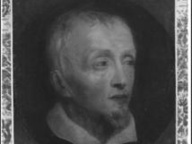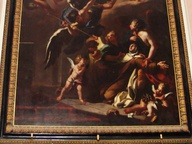I meriti delle donne. Profili di arte e storia al femminile dai documenti dell’Archivio di Stato di Venezia (secoli XV-XVIII)

1492. Asolo. Lettera di Caterina Cornaro con sottoscrizione autografa, diretta a Vittore Trevisan priore di San Cipriano di Murano
Dal 6 March 2014 al 6 June 2014
Venezia
Luogo: Palazzo Mocenigo
Indirizzo: Santa Croce 1992
Curatori: Alessandra Schiavon
Telefono per informazioni: +39 041 721798
E-Mail info: info@fmcvenezia.it
Sito ufficiale: http://www.visitmuve.it
Anche quest’anno nel solco della tradizione ormai consolidata dalle due precedenti edizioni, l’Archivio di Stato di Venezia aderisce al programma di manifestazioni proposto dal Comune di Venezia per ripensare e dare valore alla presenza delle donne nella società.
E lo fa attingendo naturalmente alla storia che conserva, a quel patrimonio sempre aperto di pergamene, carte pubbliche e private, mappe e disegni che ha ereditato dai grandiosi archivi della Serenissima: ospitate quest’anno nella sontuosa cornice di Palazzo Mocenigo di San Stae, dal 6 marzo al 6 giugno.
Per questa edizione 2014 si è pensato, tra i vari percorsi possibili, di mettere in luce - in una dimensione cronologicamente sequenziale e collettiva – alcune tra le tante figure femminili che hanno contribuito a scrivere la storia di Venezia: donne celebri e celebrate da storici e cronachisti, da corrispondenti e compagni d’arte; donne che hanno primeggiato nelle arti, nel comporre poetico o pittorico o musicale; donne che dai fasti di Palazzo ducale o dal microcosmo obbligato di un convento sono riuscite a lasciare qualche frammento memorabile di sé.
Sono donne famose, come Bianca Cappello, di illustre lignaggio patrizio, protagonista scandalosa di una fuga d’amore con un fiorentino senza arte né parte, ma prontamente riabilitata, ed insignita del titolo di “vera et particolar figliola della Repubblica nostra”, con machiavellico opportunismo, quando ad impalmarla con regolare e fastoso matrimonio sarà il 12 ottobre 1579 il Granduca di Toscana Francesco de’ Medici;
o Caterina Cornaro, andata sposa al re di Cipro Giacomo di Lusignano nell’autunno del 1572, ma poi alla morte di questi, diplomaticamente spodestata per volontà della Serenissima tesa ad assicurarsi un maggior controllo sull’isola - contrafforte di grande importanza strategica nel cuore del Mediterraneo ed oggetto di mire espansionistiche altrui - e riportata a casa e ricompensata con un regno di ozi e d’arte nella splendida rocca di Asolo: ma sempre regina continuerà ad essere, “Regina Katerina” come attesta la sua sottoscrizione nei documenti anche successivi, come il testamento autografo, esposto in mostra.
O ancora donne famose nel mondo della letteratura e della poesia come Veronica Franco, di cui si espongono il testamento e i verbali dei processi subiti dall’Inquisizione veneziana per pratiche poco ortodosse, come l’invocare diavoli e angeli, “far giochi e furfanterie” e “far innamorare alcuni todeschi”; o Cassandra Fedele e Lucrezia Marinelli e Modesta Da Pozzo, che curò tra il 1588 e il 1592 l’opera “Il merito delle donne” uscito postumo nel 1600, da cui il titolo della mostra.
Ma ci sono anche figure poco note come Maddalena Scrovegni, nata a Padova intorno al 1356 e morta a Venezia nel 1429, nipote di quell’Enrico cui si deve la famosa Cappella dell’Arena di Padova, di cui si espone lo splendido testamento interamente autografo nel quale dispone chela sua abitazione, posta nella contrada di Santa Margherita, dopo la sua morte diventi una casa (collegio) per donne sole, di buona vita e fama che vogliano vivere insieme, o Anna Notaras Paleologhina, discendente da nobile casata bizantina, in fuga in Italia e poi a Venezia dopo la caduta di Costantinopoli, che destina le sue sostanze per fondare una chiesa grecha
cum modo che sempre et in perpetuum sia greca et i preti greci, e segna in tal modo l’atto di fondazione di San Giorgio dei greci.
Oltre alle figure individuali, si è voluto allargare lo sguardo alla dimensione collettiva di queste presenze femminili: a quelle testimonianze cioè rappresentate dalle vicende di intere etnie, come nel caso delle donne albanesi - messe in luce da Lucia Nadin - esuli dalla loro patria conquistata dalle forze ottomane, e sbarcate a Venezia dopo mille peripezie: qui verranno accolte con tutti gli onori e qui verranno sostenute economicamente con la concessione di un donativo mensile fino alla fine della loro vita.
Ancora si è voluto guardare, pur nell’episodicità del discorso necessariamente vincolato ai limiti di tempo e di spazio espositivo, alla dimensione collettiva sociale: rappresentata ad esempio dalla singolare esperienza tutta veneziana delle “figlie di coro”attive nei quattro grandi “Ospedali” cittadini, in particolare quello della Pietà e degli Incurabili, dai cui archivi emergono nomi e competenze musicali;
o ancora dalle “dogaresse”, come Morosina Morosini, che porta in dote nel suo matrimonio celebrato nel 1560 con il futuro doge Marino Grimani il castello di San Vincenti in Istria, di cui si espongono due disegni del secolo XVI;
o Loredana Marcello, (1518-1572) che il marito, il doge Alvise I° Mocenigo, ricorderà nel suo testamento autografo con struggente tenerezza, parlando dell’”amore grandemente straordinario che li ha uniti nel corso della loro vita.
Ancora si è indagato all’interno della dimensione collettiva familiare come nel caso delle Tintorette o delle Tarabotti: proposta quest’ultima particolarmente affascinante ed innovativa elaborata dalle specialiste dei rispettivi ambiti di ricerca, Melania Mazzucco e Francesca Medioli che sono uscite dai percorsi consueti della biografia individuale per elaborare una nuova chiave di lettura giocata in termini di trasmissione culturale all’interno di uno specifico nucleo familiare: trasmissione d’eccellenza artistica in casa Tintoretto con le figlie di Iacopo,
Marietta e Girolama e Lucrezia, queste ultime divenute rispettivamente Suor Perina e suor Ottavia che ricamarono su seta un paliotto d’altare riproducente con vividi colori ed eccezionale cura dei particolari la Crocifissione dipinta dal padre per la Scuola Grande di San Rocco.
E trasmissione di cultura in senso lato in casa Tarabotti, dove non solo Elena /Arcangela a metà Seicento scrive e compone, pur dal claustro del convento di Sant’Anna di Castello, opere drammaticamente accusatorie come l’Inferno monacale e La tirannia paterna contro le monacazioni forzate, ma anche la sorella Caterina Agnese, data come allieva del Padovanino, tentò di realizzarsi nel mondo della pittura, come attestano alcune testimonianze coeve, come quelle di Marco Boschini ne “La carta del navigar pittoresco”.
La mostra, ideata e curata da Alessandra Schiavon dell’Archivio di Stato di Venezia, espone circa 50 preziosi documenti originali, e si è avvalsa come elaborazione del percorso di ricerca del contributo di storiche e scrittrici come
Melania Mazzucco e Adriana Chemello, Francesca Medioli e Federica Ambrosini, Dorit Raines e Lucia Nadin e Giuseppe Gullino, ai quali si deve lo specifico approfondimento biografico.
E lo fa attingendo naturalmente alla storia che conserva, a quel patrimonio sempre aperto di pergamene, carte pubbliche e private, mappe e disegni che ha ereditato dai grandiosi archivi della Serenissima: ospitate quest’anno nella sontuosa cornice di Palazzo Mocenigo di San Stae, dal 6 marzo al 6 giugno.
Per questa edizione 2014 si è pensato, tra i vari percorsi possibili, di mettere in luce - in una dimensione cronologicamente sequenziale e collettiva – alcune tra le tante figure femminili che hanno contribuito a scrivere la storia di Venezia: donne celebri e celebrate da storici e cronachisti, da corrispondenti e compagni d’arte; donne che hanno primeggiato nelle arti, nel comporre poetico o pittorico o musicale; donne che dai fasti di Palazzo ducale o dal microcosmo obbligato di un convento sono riuscite a lasciare qualche frammento memorabile di sé.
Sono donne famose, come Bianca Cappello, di illustre lignaggio patrizio, protagonista scandalosa di una fuga d’amore con un fiorentino senza arte né parte, ma prontamente riabilitata, ed insignita del titolo di “vera et particolar figliola della Repubblica nostra”, con machiavellico opportunismo, quando ad impalmarla con regolare e fastoso matrimonio sarà il 12 ottobre 1579 il Granduca di Toscana Francesco de’ Medici;
o Caterina Cornaro, andata sposa al re di Cipro Giacomo di Lusignano nell’autunno del 1572, ma poi alla morte di questi, diplomaticamente spodestata per volontà della Serenissima tesa ad assicurarsi un maggior controllo sull’isola - contrafforte di grande importanza strategica nel cuore del Mediterraneo ed oggetto di mire espansionistiche altrui - e riportata a casa e ricompensata con un regno di ozi e d’arte nella splendida rocca di Asolo: ma sempre regina continuerà ad essere, “Regina Katerina” come attesta la sua sottoscrizione nei documenti anche successivi, come il testamento autografo, esposto in mostra.
O ancora donne famose nel mondo della letteratura e della poesia come Veronica Franco, di cui si espongono il testamento e i verbali dei processi subiti dall’Inquisizione veneziana per pratiche poco ortodosse, come l’invocare diavoli e angeli, “far giochi e furfanterie” e “far innamorare alcuni todeschi”; o Cassandra Fedele e Lucrezia Marinelli e Modesta Da Pozzo, che curò tra il 1588 e il 1592 l’opera “Il merito delle donne” uscito postumo nel 1600, da cui il titolo della mostra.
Ma ci sono anche figure poco note come Maddalena Scrovegni, nata a Padova intorno al 1356 e morta a Venezia nel 1429, nipote di quell’Enrico cui si deve la famosa Cappella dell’Arena di Padova, di cui si espone lo splendido testamento interamente autografo nel quale dispone chela sua abitazione, posta nella contrada di Santa Margherita, dopo la sua morte diventi una casa (collegio) per donne sole, di buona vita e fama che vogliano vivere insieme, o Anna Notaras Paleologhina, discendente da nobile casata bizantina, in fuga in Italia e poi a Venezia dopo la caduta di Costantinopoli, che destina le sue sostanze per fondare una chiesa grecha
cum modo che sempre et in perpetuum sia greca et i preti greci, e segna in tal modo l’atto di fondazione di San Giorgio dei greci.
Oltre alle figure individuali, si è voluto allargare lo sguardo alla dimensione collettiva di queste presenze femminili: a quelle testimonianze cioè rappresentate dalle vicende di intere etnie, come nel caso delle donne albanesi - messe in luce da Lucia Nadin - esuli dalla loro patria conquistata dalle forze ottomane, e sbarcate a Venezia dopo mille peripezie: qui verranno accolte con tutti gli onori e qui verranno sostenute economicamente con la concessione di un donativo mensile fino alla fine della loro vita.
Ancora si è voluto guardare, pur nell’episodicità del discorso necessariamente vincolato ai limiti di tempo e di spazio espositivo, alla dimensione collettiva sociale: rappresentata ad esempio dalla singolare esperienza tutta veneziana delle “figlie di coro”attive nei quattro grandi “Ospedali” cittadini, in particolare quello della Pietà e degli Incurabili, dai cui archivi emergono nomi e competenze musicali;
o ancora dalle “dogaresse”, come Morosina Morosini, che porta in dote nel suo matrimonio celebrato nel 1560 con il futuro doge Marino Grimani il castello di San Vincenti in Istria, di cui si espongono due disegni del secolo XVI;
o Loredana Marcello, (1518-1572) che il marito, il doge Alvise I° Mocenigo, ricorderà nel suo testamento autografo con struggente tenerezza, parlando dell’”amore grandemente straordinario che li ha uniti nel corso della loro vita.
Ancora si è indagato all’interno della dimensione collettiva familiare come nel caso delle Tintorette o delle Tarabotti: proposta quest’ultima particolarmente affascinante ed innovativa elaborata dalle specialiste dei rispettivi ambiti di ricerca, Melania Mazzucco e Francesca Medioli che sono uscite dai percorsi consueti della biografia individuale per elaborare una nuova chiave di lettura giocata in termini di trasmissione culturale all’interno di uno specifico nucleo familiare: trasmissione d’eccellenza artistica in casa Tintoretto con le figlie di Iacopo,
Marietta e Girolama e Lucrezia, queste ultime divenute rispettivamente Suor Perina e suor Ottavia che ricamarono su seta un paliotto d’altare riproducente con vividi colori ed eccezionale cura dei particolari la Crocifissione dipinta dal padre per la Scuola Grande di San Rocco.
E trasmissione di cultura in senso lato in casa Tarabotti, dove non solo Elena /Arcangela a metà Seicento scrive e compone, pur dal claustro del convento di Sant’Anna di Castello, opere drammaticamente accusatorie come l’Inferno monacale e La tirannia paterna contro le monacazioni forzate, ma anche la sorella Caterina Agnese, data come allieva del Padovanino, tentò di realizzarsi nel mondo della pittura, come attestano alcune testimonianze coeve, come quelle di Marco Boschini ne “La carta del navigar pittoresco”.
La mostra, ideata e curata da Alessandra Schiavon dell’Archivio di Stato di Venezia, espone circa 50 preziosi documenti originali, e si è avvalsa come elaborazione del percorso di ricerca del contributo di storiche e scrittrici come
Melania Mazzucco e Adriana Chemello, Francesca Medioli e Federica Ambrosini, Dorit Raines e Lucia Nadin e Giuseppe Gullino, ai quali si deve lo specifico approfondimento biografico.
SCARICA IL COMUNICATO IN PDF
COMMENTI

-
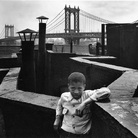 Dal 2 December 2025 al 19 February 2026
Milano | Centro Culturale di Milano
Dal 2 December 2025 al 19 February 2026
Milano | Centro Culturale di Milano
Walter Rosenblum. Il mondo e la tenerezza
-
 Dal 30 November 2025 al 12 April 2026
Gallarate | Museo MA*GA
Dal 30 November 2025 al 12 April 2026
Gallarate | Museo MA*GA
Kandinsky e l’Italia
-
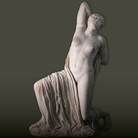 Dal 29 November 2025 al 12 April 2026
Roma | Musei Capitolini
Dal 29 November 2025 al 12 April 2026
Roma | Musei Capitolini
La Grecia a Roma
-
 Dal 22 November 2025 al 3 May 2026
Torino | Sale Chiablese dei Musei Reali
Dal 22 November 2025 al 3 May 2026
Torino | Sale Chiablese dei Musei Reali
Orazio Gentileschi. Un pittore in viaggio
-
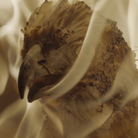 Dal 20 November 2025 al 25 January 2026
Firenze | Palazzo Strozzi
Dal 20 November 2025 al 25 January 2026
Firenze | Palazzo Strozzi
Andro Eradze. Bones of Tomorrow
-
 Dal 21 November 2025 al 28 March 2026
Cuneo | Complesso Monumentale di San Francesco
Dal 21 November 2025 al 28 March 2026
Cuneo | Complesso Monumentale di San Francesco
La Galleria Borghese. Da Raffaello a Bernini. Storia di una collezione
